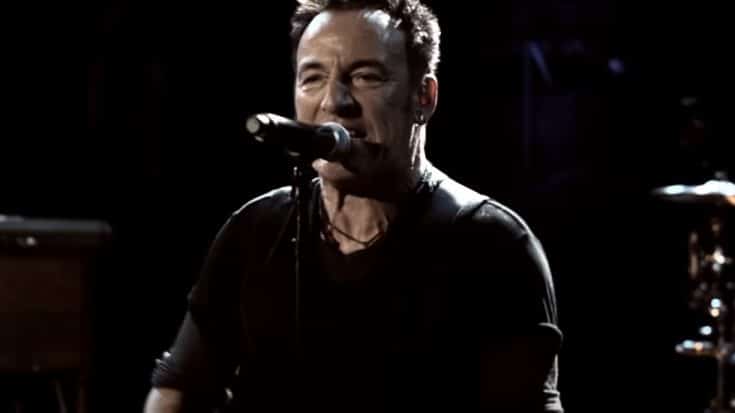The Reality Behind “Darkness on the Edge of Town” From Bruce Springsteen

via Bruce Springsteen / YouTube
Bruce Springsteen’s “Darkness on the Edge of Town” stands as a testament to resilience and the human spirit in the face of adversity. The iconic title track of the album, written during a turbulent period in Springsteen’s life, reflects a profound exploration of life’s hardships and the struggle for hope.
The Origins of Darkness
Born out of a legal battle with his former manager, Springsteen found himself in a creative limbo. Undeterred, he wrote prolifically, resulting in an album filled with songs that captured the essence of trudging forward amidst uncertainty. “Darkness on the Edge of Town” emerged as the embodiment of this struggle.
The Man at the End of the Line
The title, conceived before the lyrics, challenged Springsteen to craft words worthy of such a compelling name. The lyrics tell the tale of a broken man, grappling with the suffocation of an ordinary life that has crumbled around him:
Now some folks are born into a good life
And other folks get it anyway, anyhow
Well now I lost my money and I lost my wife
Them things don’t seem to matter much to me now
Springsteen’s character, drawn from real-life experiences, resides under a bridge at the edge of town—a metaphorical no man’s land where despair and hopelessness converge. The lyrics paint a vivid picture of a man giving in to apathy after a lifetime of hardship and loss.
Tonight I’ll be on that hill ’cause I can’t stop
I’ll be on that hill with everything I got
Lives on the line where dreams are found and lost
I’ll be there on time, and I’ll pay the cost
For wanting things that can only be found
In the darkness on the edge of town
In the darkness on the edge of town
Lament, not Anthem
“Darkness on the Edge of Town” is more than a song; it’s a lament, a poignant expression of despair. Unlike some of Springsteen’s more uplifting anthems, this track offers no resolution or hope. The heavy darkness looming over the protagonist remains unlifted because, in reality, not every story is a fairy tale. Some people endure lives filled with distress and hopelessness, with no clear way out.
Before achieving commercial success with “Born to Run,” Springsteen was already crafting one-way transmissions from a lonely place. His early work, including “Darkness on the Edge of Town,” serves as a collection of portraits depicting the struggles of everyday life. These weren’t glamorous depictions; instead, they reflected a raw and unfiltered reality.
View this post on Instagram
The Evolution of Sound
Following the success of “Born to Run,” Springsteen and the E Street Band took a different direction with “Darkness on the Edge of Town.” Stripping away the production layers, the album exposed the band’s raw essence, mirroring the aging characters within the songs. Springsteen’s vision for the album diverged from aiming for radio hits, showcasing his commitment to artistic integrity over commercial appeal.
The Communal Experience
The album’s bookends, “Badlands” and the title track, capture the collision of dreams with reality. Attending a Springsteen concert is a communal experience, where the highs and lows of life come into sharp focus. It’s a journey narrated not by a preacher but by a folk journalist, offering insights into the tapestry of American life. Pain is an integral part of reaching the exultant hymn; you can’t have one without the other.
Legacy of Darkness
While “Darkness on the Edge of Town” didn’t match the commercial success of its predecessor, it has gained mass appeal over the decades, becoming a fan favorite. Springsteen, in his artistic journey, stands as the antithesis of Norman Rockwell’s idealized portrayal of America. If Rockwell had illustrated a piece titled “Born in the U.S.A.,” it wouldn’t have been in protest. “Darkness on the Edge of Town” isn’t a protest song; it’s a song of conscience.
In conclusion, “Darkness on the Edge of Town” delves into the shadows of the human experience, capturing the essence of struggle and resilience. Springsteen’s ability to convey raw, unfiltered emotions through his lyrics and music ensures that this album remains a timeless exploration of the human condition. The darkness may linger, but so does the indomitable spirit that pushes us forward in the face of adversity.












